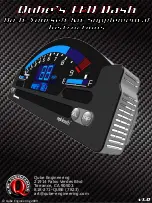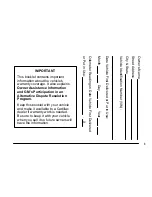
How and why do I bench bleed a master cylinder?
When installing or replacing a master cylinder, it is critical that all
air is removed from the master cylinder. This can easily be done
by bench bleeding the master cylinder prior to installation. Using
the SSBC master cylinder bleeder kit (#0460):
1) Place your master cylinder in a vise by the ears (not body).
Make sure it is level.
2) Attach a piece of clear plastic hose to the short end of one of
the plastic nozzles. Do the same to the other hose and
nozzle.
3) Clip the plastic bridge to the wall and push the ends of the
hose through the holes so they are SUBMERGED in the reservoir on either side of the wall.
4) Press the tapered end of the nozzle FIRMLY into the cylinder port hole with a twisting motion. Repeat this
procedure on the other port hole.
5) Fill the reservoir with CLEAN brake fluid recommended by the manufacturer.
6) Using full strokes, push the piston in, then release. Do this until ALL the air bubbles have disappeared
from the clear plastic hose.
(CAUTION-MASTER CYLINDER WILL NOT BLEED PROPERLY UNLESS
HOSES ARE SUBMERGED IN BRAKE FLUID UNTIL THE BLEEDING PROCESS IS COMPLETED.)
Now mount master cylinder and avoid brake fluid leaking out of front and rear ports during installation.
Bleeding steps for Dual Port Master Cylinder
If you have a master cylinder with dual port holes (4 port holes - 2 on each side), it is necessary to bleed both
port sides of the master cylinder. If both sides of the master cylinder are not bled, there will be air trapped in
the master cylinder and your brakes will not function properly.
To bleed dual port master cylinders:
1) Follow steps 1 - 6 above on the side you will be hooking the brake lines to. Plug the other side.
2) Once the air bubbles are no longer visible in the plastic hose, open the bleeder screws in the supplied
plugs and allow the mater cylinder to gravity bleed.
DO NOT
push the master cylinder piston in while the
plugs are gravity bleeding.
3) When clear, steady streams of fluid are coming out of both bleeders, close and tighten the bleeders. Give
the master cylinder piston several strokes, making sure there are still no bubbles present in the clear
plastic tubes.
4) Remove the tubes and plastic fittings and mount the master cylinder on the vehicle being careful not to
spill brake fluid on any painted surfaces.




























